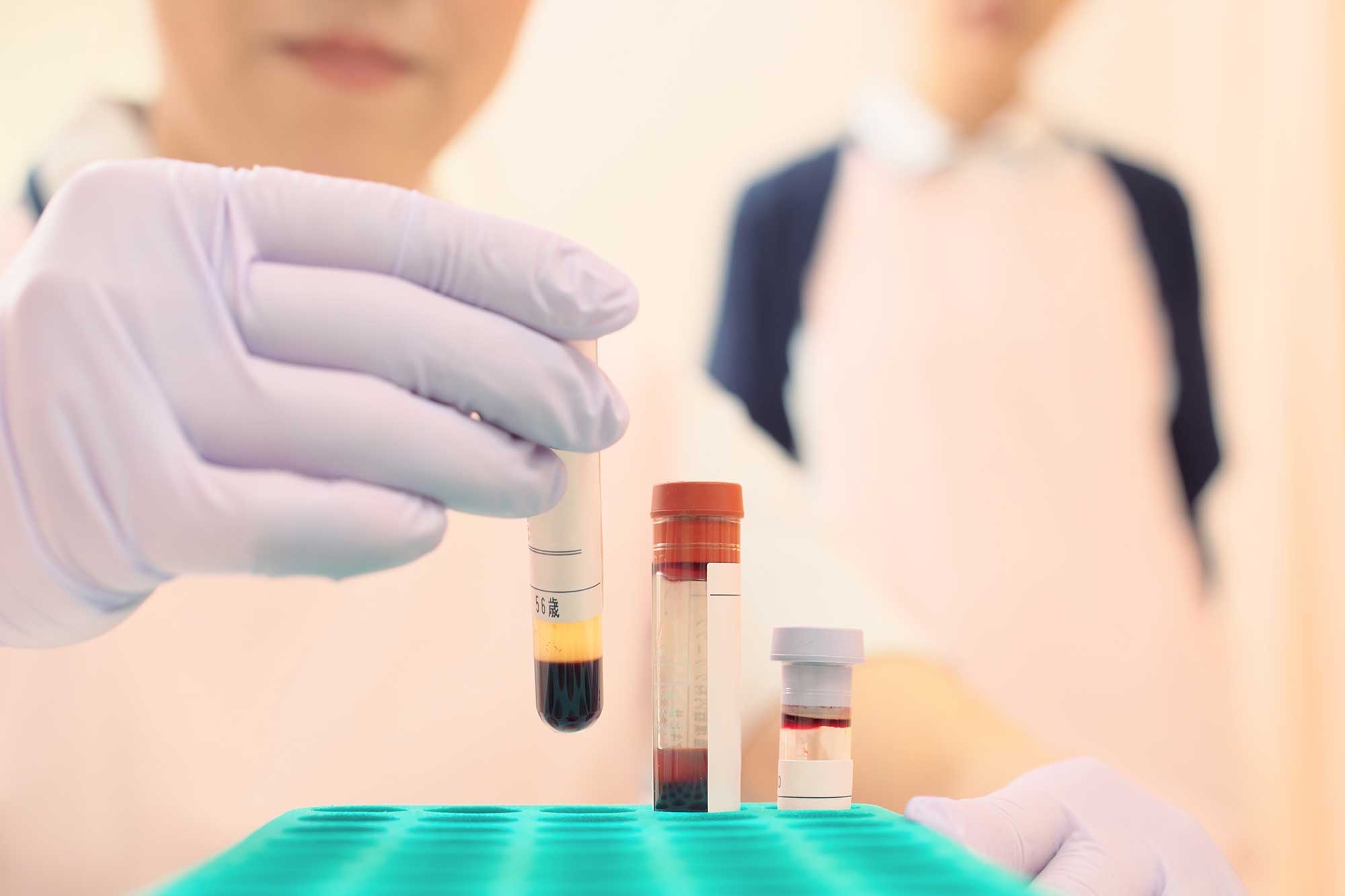When Bill Clinton stated, “It’s now conceivable that our children’s children will know the term ‘cancer’ only as a constellation of stars,” there was hope we might finally defeat New Zealand’s biggest killer.
Yet almost two decades after the former US president made that statement, many of those grandchildren are well acquainted with the disease which affects one in three Kiwis and is diagnosed in 23,000 of us annually.
The breakthroughs in understanding DNA that prompted Clinton’s optimism may have got us a little closer to defeating humankind’s greatest enemy, but the war between the human race and cancer is still very much raging.
With a new decade fast approaching, no one is suggesting victory is imminent, indeed Dr Chris Jackson, medical director of the Cancer Society, candidly says, “I don’t think we’ll see the back of cancer in my lifetime”; yet there is light at the end of the tunnel.
Experts agree there has never been such a dynamic time in cancer research, with constant breakthroughs around both the understanding of causes and the creation of treatments. And right now, the future is looking rosy – not least for Kiwis.
Ann Richardson, a professor of cancer epidemiology at the University of Canterbury, points out that while the number of people being diagnosed with cancer is growing – due to our ageing and increasing population – each person’s individual risk of getting it is falling.
“When you consider the age standardised incidence of cancer overall, it is dropping in New Zealand, and so is mortality,” she explains. “So if you’re looking at trends over time, the picture is good news.”
“It’s an unprecedented time of change in cancer medicine at the moment,” adds Dr Jackson. “The rate of progress in treatment is exponential and the developments are coming thick and fast.”

The new developments in cancer research
One area giving us hope is developments in the use of immunotherapy. A form of treatment that stimulates the body’s natural immune response to fight cancer, it was long viewed as a poor cousin to chemotherapy, radiotherapy and surgery, with patients turning to it as a last resort.
However, since the launch in 2014 of ‘miracle’ checkpoint blockade drugs that enable cells in the body to invade and potentially eliminate a tumour, it has become viewed as a revolutionary approach to cancer treatment with huge potential. Indeed, it’s now accepted that the checkpoint blockade drug Keytruda, which is approved by our drug-funding agency Pharmac, is more effective than chemotherapy in conquering advanced melanoma. And a July 2018 UK study revealed checkpoint inhibitors have more than doubled the chances of surviving cancer for more than four years.
Professor Ian Hermans, who oversees the cancer immunotherapy programme at Wellington’s Malaghan Institute of Medical Research, explains the whole area is incredibly dynamic and fast moving.
“A lot of people who were sceptical in the past have now seen that the immune system can really do it,” he says, adding that the effectiveness of treatments such as Car T-cell therapy, where a person’s immune cells are genetically modified to attack cancer, has led to fast-tracking from research labs into treatment rooms overseas.
“The word ‘cure’ is being used in some cancers that were otherwise regarded as pretty much untreatable. It’s still early days and there’s more work to do, but there are a lot of patients around now
who are probably effectively cured due to checkpoint blockades. And that was unthinkable for things like advanced melanoma a few years ago.”
Immunotherapy also plays into another rapidly developing treatment area – genome-driven cancer therapies, also known as precision medicine, which are viewed by some as the holy grail of the medicinal world.
These have developed thanks to researchers classifying many of the genetic changes that drive different cancers, and as a result, designing a range of targeted treatments that hone in on the effects of those changes. This also helps avoid the common issue of killing off healthy cells while trying to defeat cancer.
“You identify individual genes within cancer cells, which have become abnormal and are causing the cancer to grow, and you turn those genes off,” explains Dr Jackson. “That has been extremely exciting and has shown a lot of promise, with some great success in blood cancer and some types of melanoma, lung cancer and gut cancer.”
And this concept of a highly targeted approach, rather than a one-size-fits-all model, appears to be the way of the future, with the potential to assess a patient’s tumour DNA and match the right treatment to each and every patient with more precision.
Professor Hermans explains this is very relevant in his work around therapeutic treatment vaccines, which are administered after diagnosis and speed up the body’s immune response to cancer.
He reveals international trials are already underway into customised forms of these vaccines, “where you look at the DNA sequence of a tumour, predict its molecular shape relative to normal tissue, and design a vaccine that is patient-specific.”
“I would have said even two years ago something like that was completely infeasible,” adds Professors Hermans, who expects this scientific space to continue evolving.
“It’s a highly technical area at the moment – and I don’t even want to think about how expensive it will be, but as more people do it the prices will come down and you would hope eventually it would become widely available.”

The need to screen to catch cancer early
It’s broadly acknowledged catching cancer early is often the key to overcoming it, so you might think it would follow that in the future there will be more national screening programmes.
In the last year there has been a lot of optimism around CancerSEEK, a new, affordable blood test that can screen for eight common cancers, including liver, stomach and pancreatic, which in initial trials delivered very few false positives.
However, while some screening initiatives have been shown to directly impact on deaths – hence the decision in New Zealand to roll out the National Bowel Screening Programme (NBSP) to address our world-topping rates – testing is not always the golden bullet many presume. Its risks range from detection that is so premature the cancer wouldn’t have affected patients’ remaining years of life, to false diagnosis and over-treatment; which is perhaps why Health Minister David Clark is equivocal when asked about broadening existing and introducing new screening programmes.
While suggesting that once the NBSP is fully rolled out in 2021 “the age parameters will be reviewed and could be adjusted”, he is less enthusiastic about the likes of the hotly debated lung cancer screening for heavy smokers.
“A close eye is being kept on overseas studies on lung cancer screening, as it is not yet clear if it is a cost-effective programme,” he says.
There’s little doubt the dream would be a blanket preventative vaccine that would miraculously protect us all from any type of cancer.
And while this is unlikely, due to the many different forms and strains of cancer that exist, a degree of protection from some is already available.

In up to 20 per cent of cases, the main cause of a cancer can be attributed to a virus, so it follows that if you prevent a person contracting that virus, they could hope to avoid the cancer.
One of the clearest cut cases of this is human papillomavirus (HPV) – a widespread viral infection that causes cancer of the cervix and has been linked to several cancers including vaginal, penile and throat.
The HPV vaccine against this is available for all Kiwis, aged nine to 26, and Dr Jackson believes it “will lead to the near elimination of cervical cancer as an illness in our lifetime”.
Research is ongoing into the effect of other viruses on cancer – and the subsequent potential for vaccines.
Earlier last year Christchurch researchers revealed a common gut bug could be responsible for bowel cancer, while Professor Richardson’s work focuses on the impact of cytomegalovirus (CMV) and Epstein-Barr virus (EBV) on breast cancer.
When analysing the hugely disparate geographical differences in incidence of this disease, Professor Richardson realised that in countries with lower rates of breast cancer, people are more likely to be exposed to CMV and EBV in childhood – and as a consequence develop antibodies to the virus at a young age. Her research is exploring how and why this is the case, but there is potential it could eventually lead to a vaccine that could be administered to children.
“That’s the hope; that if you found a pattern there would be a way to prevent people even getting breast cancer, which would be fantastic,” says Dr Richardson.
Smoking and obesity: key contributing factors to cancer
Of course, viruses are only part of the puzzle; up to another 40 per cent of causes can be controlled without medical intervention. There’s now little doubt tobacco, alcohol, obesity, inactivity and sun exposure increase the risk of getting cancer, and the medical profession is optimistic a greater understanding of this could drastically reduce cancer rates.
Through the Smokefree Aotearoa 2025 programme, it’s hoped that within six years fewer than five percent of Kiwis will use cigarettes – a figure which currently sits at 14 per cent, and rises to 35 per cent among Maori.
“There will be a lag, but we will in time see the number of smoking-related cancers reducing,” says Dr Jackson, pointing out smoking is a risk factor for cancers including bladder and bowel, as well as the more obvious lung and throat, and is responsible for one in four cancer deaths. A focus on our dire obesity rates could also have significant impact.
“There are 12 cancers that have been linked to obesity,” Professor Richardson says, referring to cancers such as stomach, bowel and skin, as well as breast cancer in post-menopausal women. “And not only the risk of developing cancer, but for » some cancers the outcome is not so good if they are overweight.”
For example, death from the blood cancer multiple myeloma is 50 per cent more likely for those who are extremely obese compared with people at normal weight, while research indicates those with rectal cancer and a high BMI have increased risk of recurrence.
Sun safety is another area in which New Zealand epidemiologists believe more could be done – especially given our world-topping rates are increasing. Which begs the question, what is the government doing to address this largely societal issue?

Cancer in the future
David Clark confirms “reducing cancer rates over the next decade is a priority for this government”, and that a focus on modifiable risk factors is key. He has asked the Ministry of Health to prepare a draft strategy around the issue.
“I want the new strategy to have a greater focus on prevention and early detection,” he reveals, acknowledging the importance of redressing disparate outcomes – such as the cancer death rate for Maˉori being 1.5 times that for non-Maˉori cancer victims.
“This will require more work on reducing risk factors for cancer such as smoking and harmful alcohol use,” David adds. “Health promotion via SunSmart remains the best approach to reducing the impact of melanoma in New Zealand.”
And with determined focus across the board, from research labs into treatment rooms and up to the Beehive, we can be optimistic about the future of cancer.
“I know that in the future the impact of cancer will reduce – we will have less toxic treatments, higher cure rates and hopefully lower risk of cancer for many individuals,” says Dr Jackson.
“We’ll have better prevention and better early detection.”
And while our children’s children will likely be well acquainted with this killer illness, maybe generations in the next century will only be reading about cancer in their horoscopes.
How much does cancer cost in New Zealand?

The recent case of Kurt Brunton, who passed away in January from blood cancer, needing $1.5 million to receive life-saving Car T-cell therapy in the US put the spotlight on issues around cost of treatment.
The New Zealand model revolves around drug-funding agency Pharmac, who have an annual budget of $985 million to allocate to medicine and technology for the public health system.
Typically this has given us access to the best possible range of drugs – as opposed to the latest, more expensive drugs.
While the National government went over Pharmac’s head in funding breast cancer drug Herceptin a decade ago, Health Minister David Clark is against such intervention.
“It’s not for us as politicians to second guess the experts at Pharmac about which drugs it purchases,” he says.
This is leading to a ‘survival of the richest’ scenario, whereby patients face costs of up to $10,000 a month to access cutting-edge treatments that will extend their lives. And that price tag is not likely to drop anytime soon, with indications being general cancer drug costs will grow by 10.5 per cent annually.
Health insurance companies are offering a step towards a solution, with policies that cover non-Pharmac approved cancer therapies. The other option could be to review our entire system, something the Cancer Society’s Dr Chris Jackson explains is in our hands.
“As a society we have to decide if we want Pharmac’s rules loosened so it has a role in ensuring New Zealanders have access to the latest and newest cancer drugs – but that will have a cost, meaning we won’t be investing somewhere else,” he says.
Advances in the fight against cancer in Aotearoa
The Precision Paediatric Cancer Project launched nationwide in May 2018, and uses a state-of-the-art genetic test to identify gene mutations in youngsters with cancer, in the hopes of matching their tumours to specific medicines.
Kiwi patients wanting to access Car T-cell therapy could soon find it easier as researchers at the Malaghan Institute are working on evolving the treatment, with hopes their first clinical trials will take
place this year.
In May 2018 University of Otago researchers based in Christchurch made a world-leading breakthrough by identifying a toxic bug they believe could be responsible for bowel cancer – a discovery that could lead to a life-saving vaccine.
In March 2018 an anti-cancer drug developed at the University of Auckland picked up multi-million dollar funding for clinical trials which could start this year. A form of chemotherapy, CP-506 is safer and more targeted than older versions of the treatment, and has the potential to treat tumours that resist all other medicines.


